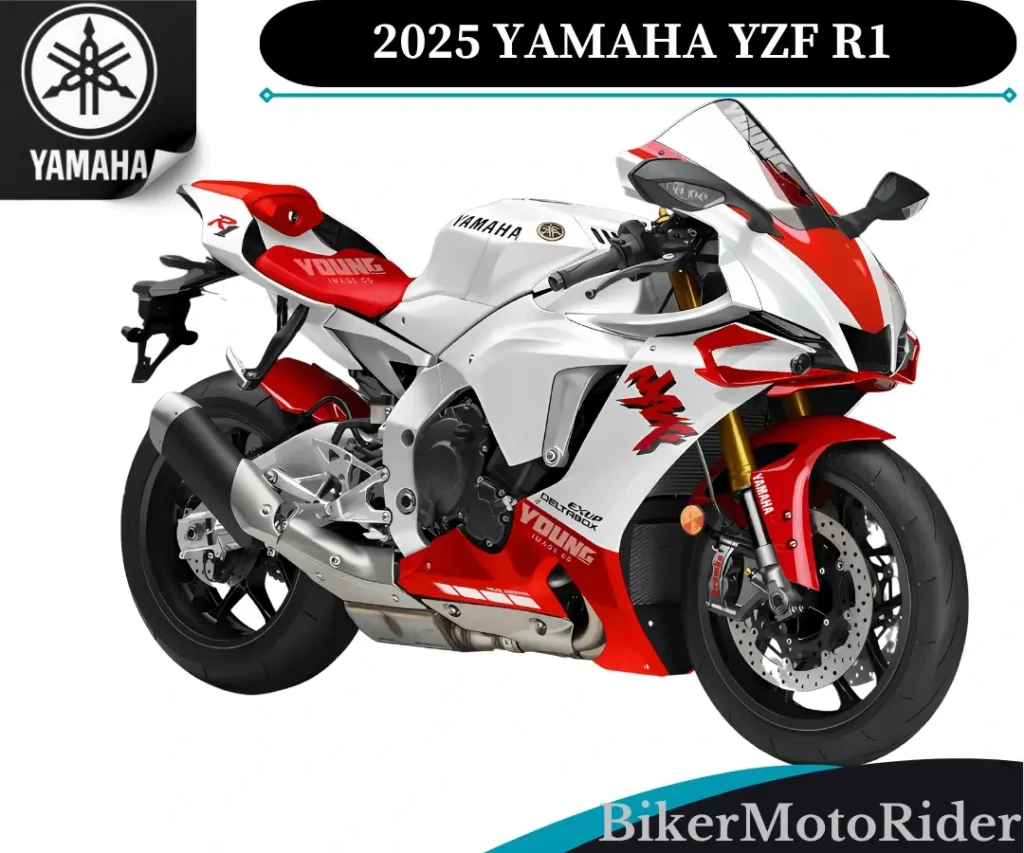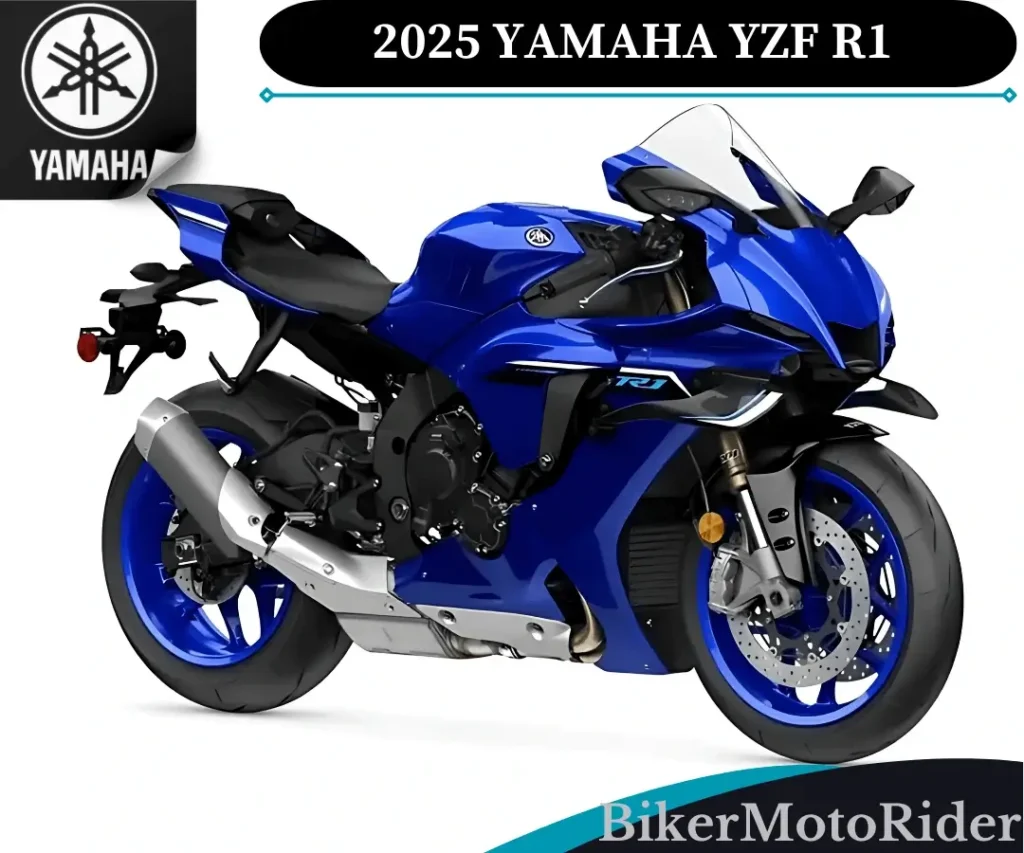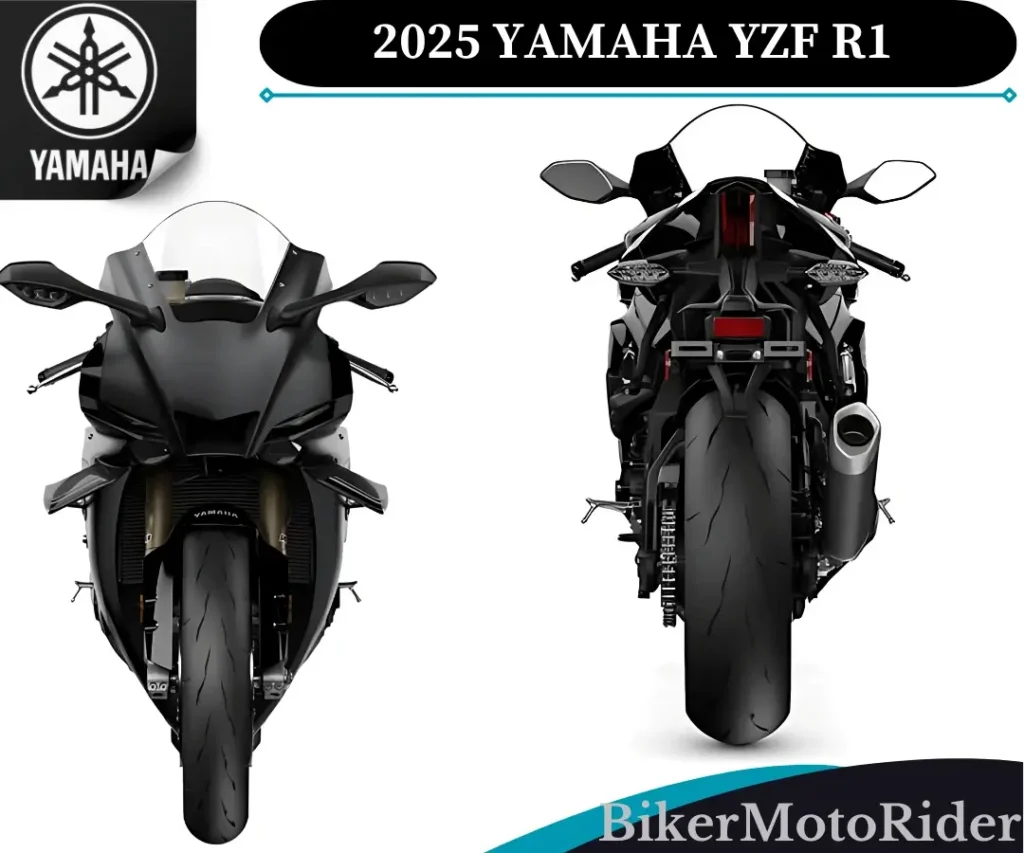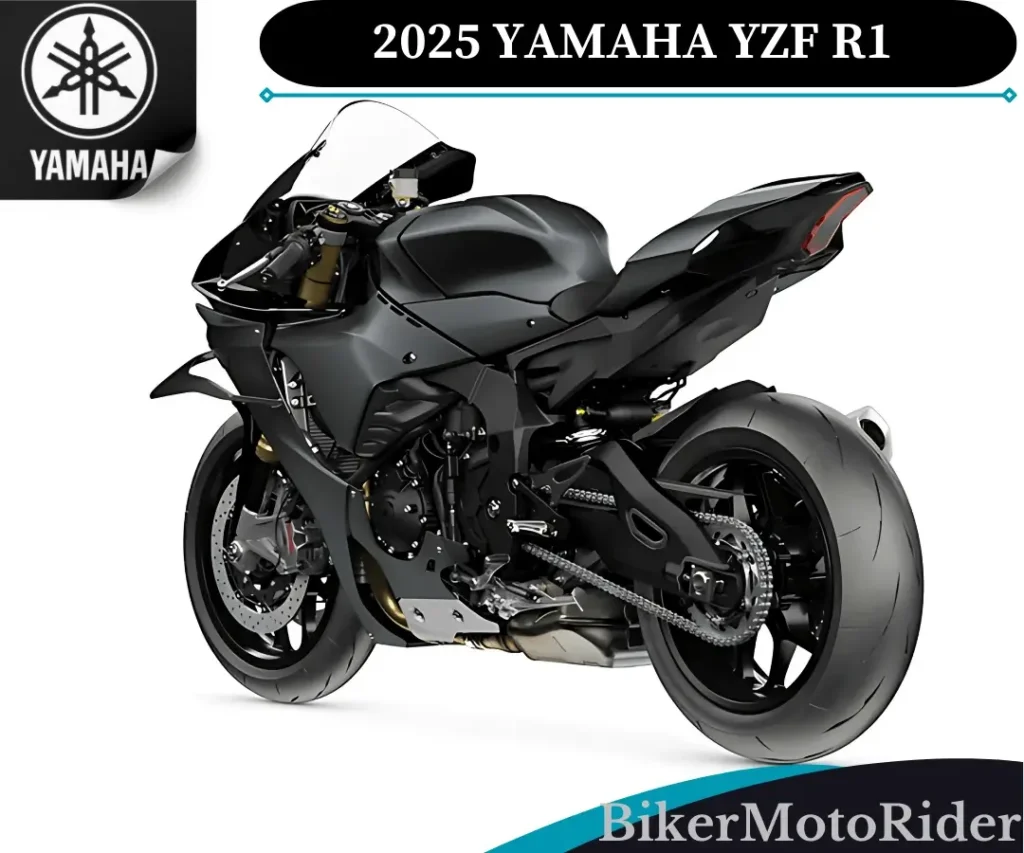The 2025 Yamaha YZF R1 is more than just a superbike—it’s a showcase of cutting-edge technology, blistering performance, and precision engineering. This bike takes the legacy of the YZF R1 to new heights, combining superbike power with a level of sophistication that only Yamaha can deliver. Whether you’re an experienced racer or a motorcycle enthusiast looking for your next thrill, the 2025 Yamaha YZF R1 promises an exhilarating ride that will leave you craving more.
In this article, we’ll explore the advanced features, design upgrades, and outstanding performance capabilities that make the 2025 YZF R1 a standout in the world of high-performance motorcycles. From its aerodynamic styling to its powerful engine, everything about this bike is crafted for riders who demand the very best. Let’s dive in and discover what makes the 2025 Yamaha YZF R1 the ultimate machine for thrill-seekers and road warriors alike.

Table of Contents
- 2025 Yamaha YZF R1: Full Specifications
- Performance and Design Highlights
- Design and Aerodynamics of the 2025 Yamaha YZF R1
- Comparing the 2025 Yamaha YZF R1 to Its Competitors in the Superbikes Category
- Frequently Asked Questions (FAQ) About the 2025 Yamaha YZF R1
-
- 6. What’s the top speed of the 2025 Yamaha YZF R1?
- 7. How is the fuel economy of the 2025 Yamaha YZF R1?
- 8. Does the 2025 Yamaha YZF R1 come with ABS?
- 9. Can the 2025 Yamaha YZF R1 be used for long rides?
- 10. How much does the 2025 Yamaha YZF R1 weigh?
- 11. What colors are available for the 2025 Yamaha YZF R1?
- 12. Does the 2025 Yamaha YZF R1 have adjustable suspension?
- 13. What is the warranty on the 2025 Yamaha YZF R1?
-
- Conclusion: Why Choose the 2025 Yamaha YZF R1
2025 Yamaha YZF R1: Full Specifications
| Specification | Details |
| Engine Type | 998cc Liquid-cooled, 4-stroke, DOHC, 4-cylinder |
| Bore x Stroke | 79.0mm x 50.9mm |
| Compression Ratio | 13.0:1 |
| Maximum Horsepower | 200 HP @ 13,500 RPM |
| Torque | 112.4 Nm @ 11,500 RPM |
| Fuel System | Yamaha Chip Controlled Throttle (YCC-T) |
| Cooling System | Liquid-cooled |
| Transmission | 6-speed constant mesh |
| Final Drive | Chain |
| Frame | Aluminum Deltabox II |
| Suspension (Front) | 43mm Kayaba inverted fork, fully adjustable |
| Suspension (Rear) | Monocross shock, fully adjustable |
| Brakes (Front) | Dual 320mm disc with Brembo radial calipers |
| Brakes (Rear) | 220mm disc, single piston caliper |
| Tires (Front) | 120/70 ZR17 |
| Tires (Rear) | 190/55 ZR17 |
| Wheelbase | 1,405mm (55.3 inches) |
| Seat Height | 855mm (33.7 inches) |
| Weight | 199 kg (438 lbs) |
| Fuel Tank Capacity | 17 liters (4.5 US gallons) |
| Lighting System | Full LED headlights and tail light |
| Electronic Aids | Traction Control, Quick Shifter, Ride Modes |
Performance and Design Highlights
The 2025 Yamaha YZF-R1 continues to dominate the superbike world with its 998cc inline-4 engine, designed to deliver a blistering 200 horsepower at 13,500 RPM. This powerhouse engine gives the bike incredible acceleration and top-end performance, making it a thrill to ride on both the track and open roads.
The YZF-R1’s sophisticated aluminum Deltabox II frame provides the perfect combination of strength and agility, ensuring that it stays nimble at high speeds and in tight corners. The frame, combined with Kayaba front forks and Monocross rear suspension, helps the bike maintain a precise and responsive feel, allowing riders to push it to the limit with confidence.
With a 6-speed gearbox and YCC-T electronic throttle system, the R1 provides smooth shifting and control, essential for both beginners looking to learn the ropes and experienced riders aiming for the fastest lap times.
Advanced Electronic Systems for Better Control
Yamaha has outfitted the 2025 YZF-R1 with cutting-edge electronic systems that enhance both performance and safety. The traction control system and ride modes give riders the flexibility to adjust power delivery and stability according to their riding style or track conditions. The Quickshifter technology allows for fast and seamless shifts, contributing to better performance without the need for manual clutch operation.
The Brembo brakes and dual front discs ensure that you can easily manage even the fastest speeds with outstanding stopping power. The modernized full LED lighting system ensures excellent visibility, even in low-light conditions, making the 2025 R1 as safe as it is powerful.

Design and Aerodynamics of the 2025 Yamaha YZF R1
Explore the sleek, aggressive design of the 2025 Yamaha YZF-R1 and how its aerodynamic enhancements improve performance at high speeds. From the sculpted bodywork to the cutting-edge windscreen, discover how Yamaha combines style and functionality.
Advanced Technology in the 2025 Yamaha YZF R1: More Than Just Power
The 2025 R1 is packed with advanced tech that enhances both performance and rider experience. Delve into systems like Yamaha’s Communication Control Unit (CCU), variable-length intake system, traction control, and anti-lock braking system (ABS).
Riding Comfort and Ergonomics on the 2025 Yamaha YZF R1
While designed for high performance, the Yamaha R1 also strives to offer a comfortable riding experience. Learn how the bike’s seating, footpeg positioning, and handlebar setup accommodate riders on long trips, track days, or casual rides.
How the 2025 Yamaha YZF R1 Performs on the Track
The true test of any superbike is its performance on the racetrack. This section will explore how the 2025 Yamaha YZF R1 handles aggressive cornering, braking, and overall stability at high speeds on various track types.
Comparing the 2025 Yamaha YZF R1 to Other Superbikes
How does the 2025 Yamaha YZF R1 stack up against other top-tier sportbikes like the Honda CBR1000RR-R or Kawasaki Ninja ZX-10R? This comparison section will break down performance, handling, price, and value for money.
What to Expect from the 2025 Yamaha YZF R1: Price, Availability, and Variants
Get the inside scoop on the 2025 Yamaha YZF R1’s pricing, expected release dates, and the different R1 variants available. Also, find out about dealer options, financing plans, and the R1’s place in the Yamaha lineup for the year.
Comparing the 2025 Yamaha YZF R1 to Its Competitors in the Superbikes Category
| Specification | Yamaha YZF-R1 (2025) | Honda CBR1000RR-R | Kawasaki Ninja ZX-10R | BMW S1000RR | Ducati Panigale V4 |
| Engine Type | 998cc Inline-4 | 999cc Inline-4 | 998cc Inline-4 | 999cc Inline-4 | 1,103cc V4 |
| Power Output | 200 hp @ 13,500 rpm | 217 hp @ 14,500 rpm | 203 hp @ 13,500 rpm | 205 hp @ 13,000 rpm | 214 hp @ 13,000 rpm |
| Torque | 112.4 Nm @ 11,500 rpm | 113 Nm @ 12,500 rpm | 113 Nm @ 11,500 rpm | 113 Nm @ 11,000 rpm | 124 Nm @ 10,000 rpm |
| Transmission | 6-speed | 6-speed | 6-speed | 6-speed | 6-speed |
| Electronics | YCC-T, Traction Control, ABS | TBW, Selectable Torque Control | Electronic Control Unit (ECU) | Race ABS, DTC, ESA | Bosch Cornering ABS, DTC |
| Suspension (Front) | Kayaba inverted forks | Showa forks | Showa forks | Dynamic ESA suspension | Fully adjustable Ohlins forks |
| Suspension (Rear) | Monocross shock | Showa rear shock | Ohlins rear shock | Adjustable Ohlins rear shock | Fully adjustable rear shock |
| Brakes | Dual 320mm disc, Brembo | Dual 330mm disc, Nissin | Dual 330mm disc, Brembo | Dual 320mm disc, Brembo | Dual 330mm disc, Brembo |
| Weight | 199 kg (438 lbs) | 201 kg (443 lbs) | 203 kg (447 lbs) | 197.5 kg (435 lbs) | 198 kg (436 lbs) |
| Fuel Capacity | 17 liters (4.5 US gallons) | 16.2 liters (4.3 US gallons) | 17 liters (4.5 US gallons) | 17.5 liters (4.6 US gallons) | 17 liters (4.5 US gallons) |
| Price | $17,599 | $28,000 (approx) | $16,999 | $18,500 | $24,000 |
| Top Speed | 186 mph (299 km/h) | 186 mph (299 km/h) | 186 mph (299 km/h) | 186 mph (299 km/h) | 198 mph (319 km/h) |

In the fiercely competitive world of superbikes, the 2025 Yamaha YZF-R1 faces tough rivals that also push the limits of performance, technology, and design. Let’s compare the R1 with some of its closest competitors, examining key specifications, features, and performance aspects that set each bike apart:
Yamaha YZF R1 vs Honda CBR1000RR-R
The Honda CBR1000RR-R is one of the Yamaha R1’s main competitors. Launched with a more track-oriented approach, it offers an aggressive stance with similar cutting-edge technology. Let’s compare the two:
- Engine Performance: Both the R1 and CBR1000RR-R sport high-performance inline-four engines, but the Honda produces approximately 217 horsepower, giving it a slight edge over the R1’s 200 horsepower. However, the Yamaha R1 benefits from a lighter frame, offering superior agility in corners.
- Electronics: Honda’s Throttle By Wire (TBW) system and Selectable Torque Control (TCS) are designed for optimum performance and rider control, while the R1 features Yamaha’s YCC-T (Throttle Control) system and advanced traction control settings that are considered one of the best in class for smooth throttle delivery.
- Price Point: While both bikes are premium offerings, the CBR1000RR-R is generally priced higher, making the R1 a more cost-effective choice for riders who want near-equal performance without the inflated price tag.
Yamaha YZF R1 vs Kawasaki Ninja ZX-10R
The Kawasaki Ninja ZX-10R is one of the leading contenders in the superbike market, and its track-ready capabilities make it a direct competitor to Yamaha’s R1. Let’s dive deeper into how the two stack up:
- Horsepower and Torque: The ZX-10R’s 998cc engine produces around 203 horsepower, slightly more than the Yamaha R1, which offers 200 horsepower. Both bikes deliver impressive acceleration, but Kawasaki’s bike is also renowned for its high-revving performance.
- Suspension and Handling: Both bikes feature top-of-the-line suspension, with the Kawasaki ZX-10R featuring an Ohlins TTX36 rear shock and Showa front forks that focus on fine-tuning to suit the rider’s style. Yamaha’s R1 uses Kayaba forks, offering equally great suspension performance but leaning slightly towards accessibility and usability for both seasoned and less-experienced riders.
- Electronic Systems: The ZX-10R’s electronic package features Kawasaki’s Electronic Control Unit (ECU), which offers ride modes and more granular control of engine parameters. Yamaha’s R1 is fitted with a similarly detailed array of electronics, including Quickshifter technology and Cornering ABS, ensuring a high level of safety while still delivering racing-style throttle response.
- Track Performance: On the track, the ZX-10R is often regarded as a bike built with more specific leanings toward circuit racing, while the R1 offers versatility—excelling in both road and track scenarios. The ZX-10R typically edges out the R1 in outright lap times, though many riders consider the R1 to have superior ergonomics.
Yamaha YZF R1 vs BMW S1000RR
The BMW S1000RR is another well-established powerhouse in the superbike category, featuring incredible engineering and performance. Here’s how the two measure up:
- Engine and Power: BMW’s S1000RR comes with a 999cc inline-four engine that produces 205 horsepower, slightly more than the Yamaha’s 200. The BMW, however, has more torque at lower revs, which helps it rocket off the line faster.
- Electronics and Rider Aids: The BMW S1000RR is equipped with Race ABS, Dynamic Traction Control (DTC), and an advanced Electronic Suspension Adjustment (ESA) system. This puts the BMW ahead in terms of high-end rider aids designed to maximize performance in varying conditions.
- Price and Value: The BMW S1000RR is often priced at a higher premium when compared to the YZF R1, partly due to its advanced suspension and higher-tech electronic systems. Yamaha’s R1 remains the more affordable option if you’re looking for premium performance on a budget.
- Chassis and Handling: BMW’s ShiftCam technology allows for variable camshaft timing that adds an extra level of complexity and smoothness to its riding experience. The R1 counters with an impressive Deltabox II frame, providing excellent feedback to the rider while maintaining control in track situations.
Yamaha YZF R1 vs Ducati Panigale V4
The Ducati Panigale V4 stands out as one of the most stylish and performance-focused superbikes available. With an Italian pedigree and track-focused innovations, how does it compare with the Yamaha R1?
- Engine and Power: The Ducati Panigale V4 is equipped with a 1,103cc V4 engine capable of producing up to 214 horsepower, making it the most powerful of the four bikes listed here. The R1 trails slightly behind, but both bikes share an exhilarating experience in the realm of high-revving engines and sharp throttle control.
- Electronics and Technology: Ducati’s Panigale V4 features an innovative Winglet system to improve aerodynamics, and advanced Bosch cornering ABS that offers ultimate control at any speed. The Yamaha R1, while incredibly high-tech, relies on traditional forms of aerodynamics and a simpler approach to electronics.
- Ergonomics: Ducati’s Panigale V4 comes with a more aggressive riding position aimed at professional racers, while the YZF-R1 is often favored for its more beginner-friendly ergonomics that are still performance-oriented. The R1’s comfort and manageability can often outweigh Ducati’s racier handling, especially for longer sessions.
Overall Verdict
The 2025 Yamaha YZF R1 stands out by providing a balanced mix of technology, performance, and price, giving it a distinct advantage for riders looking for versatility both on the track and in everyday riding conditions. While its competitors, such as the Honda CBR1000RR-R, Kawasaki Ninja ZX-10R, BMW S1000RR, and Ducati Panigale V4, offer a slight advantage in specific areas like horsepower or advanced electronic features, the YZF R1 remains one of the best all-around options in terms of value for money, handling, and reliability.

Frequently Asked Questions (FAQ) About the 2025 Yamaha YZF R1
6. What’s the top speed of the 2025 Yamaha YZF R1?
The 2025 Yamaha YZF-R1 reaches a top speed of around 186 mph (299 km/h), making it one of the fastest in its class.
7. How is the fuel economy of the 2025 Yamaha YZF R1?
The YZF-R1 achieves approximately 35–40 mpg under normal riding conditions, offering decent fuel efficiency for a superbike.
8. Does the 2025 Yamaha YZF R1 come with ABS?
Yes, it features cornering ABS to enhance braking control and safety while riding.
9. Can the 2025 Yamaha YZF R1 be used for long rides?
While the R1 is a high-performance sportbike, its ergonomics allow for relatively comfortable long-distance riding.
10. How much does the 2025 Yamaha YZF R1 weigh?
The bike weighs approximately 199 kg (438 lbs), contributing to its lightness and agility on the track.
11. What colors are available for the 2025 Yamaha YZF R1?
The 2025 R1 is available in striking color options, including Yamaha Blue, Matte Black, and Team Yamaha color schemes.
12. Does the 2025 Yamaha YZF R1 have adjustable suspension?
Yes, the R1 is equipped with fully adjustable suspension for both front and rear, providing flexibility for different riders.
13. What is the warranty on the 2025 Yamaha YZF R1?
Yamaha offers a 1-year limited warranty with coverage for parts and labor, extendable with purchase of additional coverage.
Conclusion: Why Choose the 2025 Yamaha YZF R1
The 2025 Yamaha YZF R1 remains one of the top choices in the world of superbikes, combining powerful engine performance, cutting-edge electronics, and a sleek design. Whether you’re looking to set lap records on the track or simply enjoy a high-performance ride, the YZF-R1 offers a complete package without the ultra-premium price tag.
Its combination of technology, handling, and rider-centric features positions the 2025 R1 as a worthy competitor to its rivals like the Honda CBR1000RR-R, Kawasaki Ninja ZX-10R, and BMW S1000RR. While those bikes may offer marginal advantages in certain categories, the YZF-R1 is unmatched when it comes to offering an all-around excellent package for performance riders and track enthusiasts.
With advanced electronics, powerful engine options, and a solid reputation for reliability, the 2025 Yamaha YZF R1 is an ideal choice for experienced riders who demand performance, agility, and affordability. Whether you’re looking for precision handling, high-end technology, or just a thrilling ride, the R1 is a superbike that truly delivers.